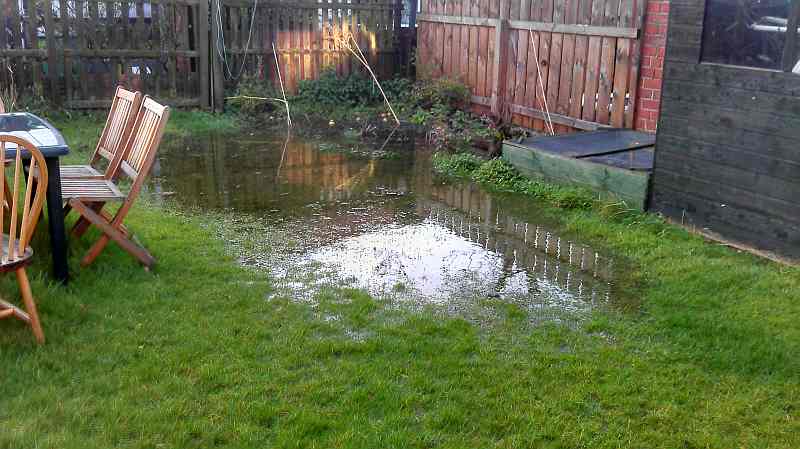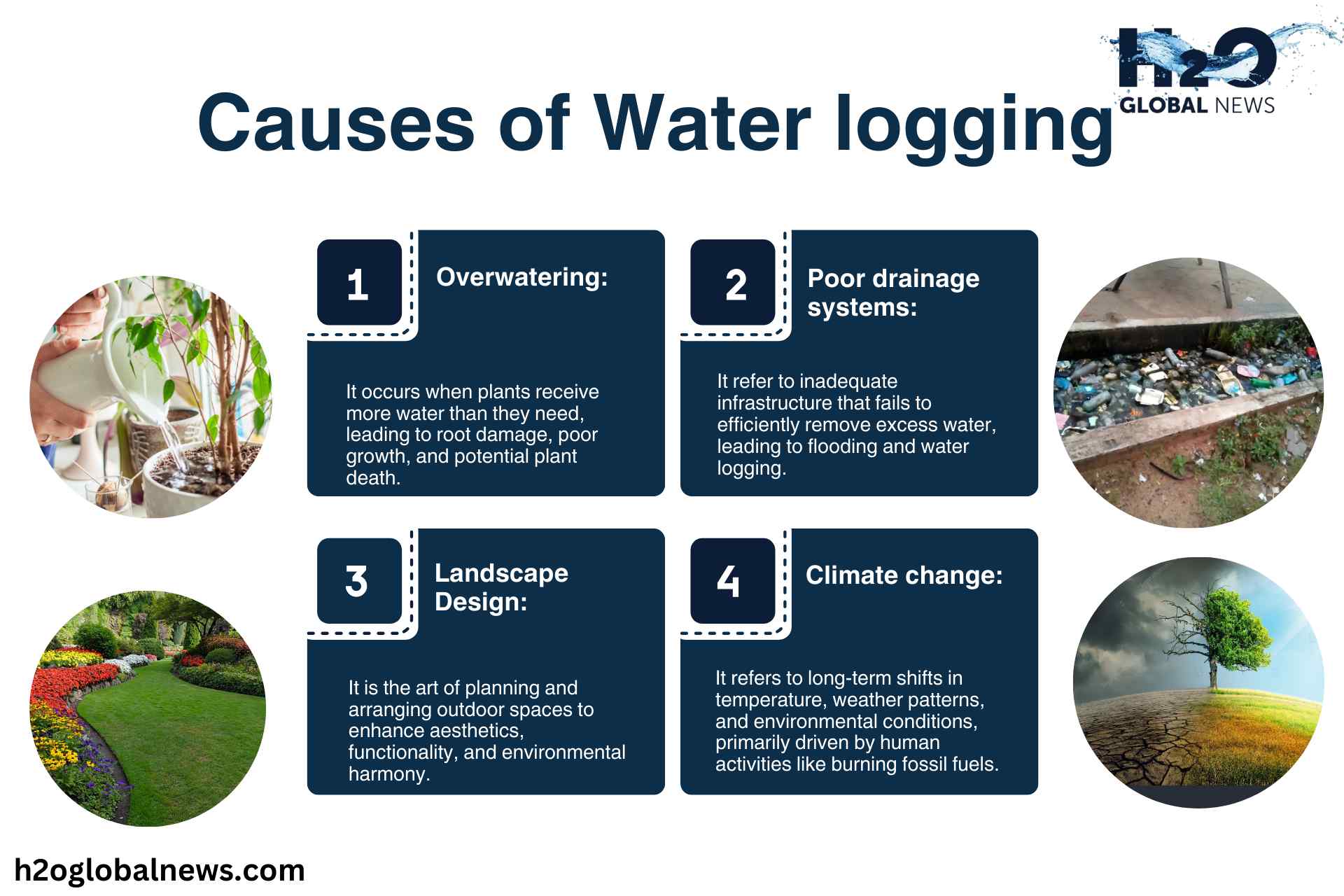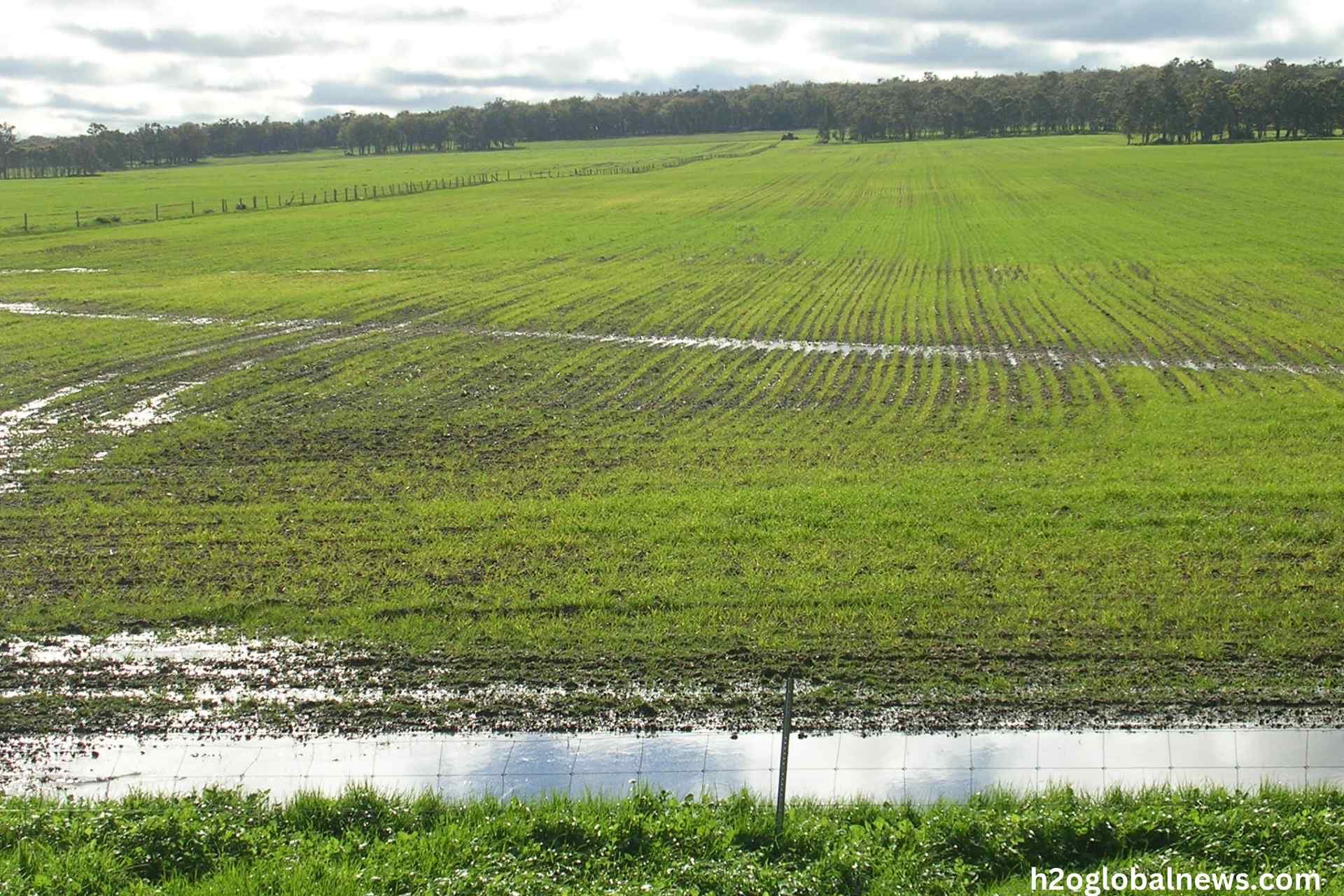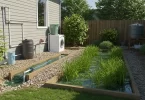Water logging can be a significant problem for gardeners, particularly in regions with poor drainage or high rainfall. If left unchecked, it can choke off plant roots, encourage the growth of dangerous fungi, and deteriorate the general health of your garden. In this article, we’ll explain water logging, how it occurs, and practical ways to avoid it to ensure that your garden flourishes even in damp weather.
What is Water Logging?
When soil becomes so saturated with water, it prevents air, nutrients, and oxygen from reaching plant roots, called waterlogging. Root rot slows plant growth, and mortality can result from soil waterlogging because it prevents roots from breathing. Common symptoms include withering plants, compacted or sticky soil, and standing water in your yard.
Causes of Water Logging
Several factors contribute to garden holding water:
- Poor Drainage Systems: Clay-rich or compacted soils have low permeability, preventing water from draining effectively.
- Climate Change: Rising global temperatures lead to erratic weather patterns, including intense and frequent rainfall. These downpours overwhelm natural drainage systems, leading to waterlogged conditions.
- Overwatering: Excessive watering or irrigation can saturate the soil, mainly if there’s no proper drainage mechanism.
- Landscape Design: Flat or low-lying areas in your garden may collect water, worsening the problem.
Preventing Water Logging in Your Garden
Improve Drainage
The most effective way to avoid water logging is to improve drainage. This can be done in a few ways:
- Add compost or organic matter to the soil before planting. Compost helps create air pockets in the soil that allow for better drainage.
- Install drainage pipes below planting beds. Perforated pipes can channel excess water away from plant roots.
- Create raised garden beds. Since the soil is not compacted, raised beds drain better. You can start with just 6-8 inches of height for most plants.
- Space plants appropriately. Overcrowding plants prevents efficient drainage and air circulation. Thin seedlings and space plants according to the seed packet or plant tag recommendations.
Reduce watering frequency
Water only when the top few inches of soil are dry. Generally, most gardens only need about 1 inch of water per week. You can use a rain gauge to measure how much rain and irrigation your garden receives. For container plants, allow the top inch or so of potting mix to dry out between waterings.
Improve surface runoff
For areas where water pools, you can create gentle slopes or berms to encourage runoff into drains, ditches, or rain barrels. Installing paving stones, gravel, or permeable pavement in walkways can also help reduce standing water.
By following these helpful tips, you’ll be well on your way to preventing waterlogging and enjoying a thriving, productive garden. With good drainage and moisture control, your plants will be healthy, happy, and able to reach their full potential.
How to Fix an Existing Water Logging Problem
If you have an existing water logging problem in your garden, there are a few steps you can take to remedy the situation.
Improve Drainage
The most effective solution is to improve drainage and allow excess water to flow away from plant roots. You can:
- Dig shallow trenches or ditches to help channel water away from problem areas. Fill them with gravel to aid drainage without erosion.
- For small areas, install perforated pipes to help move water away. Surround the pipes with gravel and soil.
- Add compost, peat moss, or perlite to the soil to improve drainage and aeration. These amendments will help the soil absorb and retain less moisture.
- Raise plant beds and paths to allow water to drain down and away.
- Re-grade the area if necessary to create a slight slope for better runoff and to avoid pooling.
Space Plants Appropriately
Overcrowding can contribute to excess moisture and poor air circulation. Thin out plants and relocate some to improve spacing, which allows for better evaporation and root growth.
Allow the Soil to Dry Out
Once you have improved drainage and spacing, allow the soil to dry out before watering again. Check the moisture level frequently using a moisture meter or inserting your finger in the soil. Water only once the top few inches become dry. This will help restore the proper moisture balance in the soil.
Continuously monitoring your garden and making adjustments as needed will help prevent water logging from recurring. To avoid long-term damage, take action as soon as you notice signs like ponding, algae growth, root rot, or lack of plant growth. With time and the proper corrections, you can restore your garden soil to an ideal moisture level for your plants.
Soil Water Condensation and Its Role
When water vapor in the soil turns into liquid, it’s known as soil water condensation. Although condensation usually helps preserve soil moisture, too much water from irrigation or rain exacerbates the issue and results in saturation. Proper drainage and aeration can prevent waterlogging and balance soil moisture.
Conclusion
By understanding water logging and taking preventive measures, gardeners can tackle the challenges of excess water and maintain healthy, vibrant plants. Whether through improved drainage, thoughtful planting, or addressing the impacts of climate change, these solutions ensure your garden remains resilient in all weather conditions. Though it will require ongoing maintenance, the reward of a healthy, productive garden is well worth the effort.
FAQs
1- How does climate change cause water logging?
Climate change leads to erratic weather patterns, including heavy rainfall, which overwhelms drainage systems and increases garden water accumulation.
2- How can I prevent water logging in my garden?
Improve drainage by aerating soil, adding organic matter, installing French drains, and planting in raised beds. Adjust watering practices and consider redesigning your garden to optimize water flow.
3- What plants are best for waterlogged areas?
Choose water-tolerant plants like cattails, willows, and certain types of grasses. These can thrive in wet conditions and help manage excess water in your garden.










